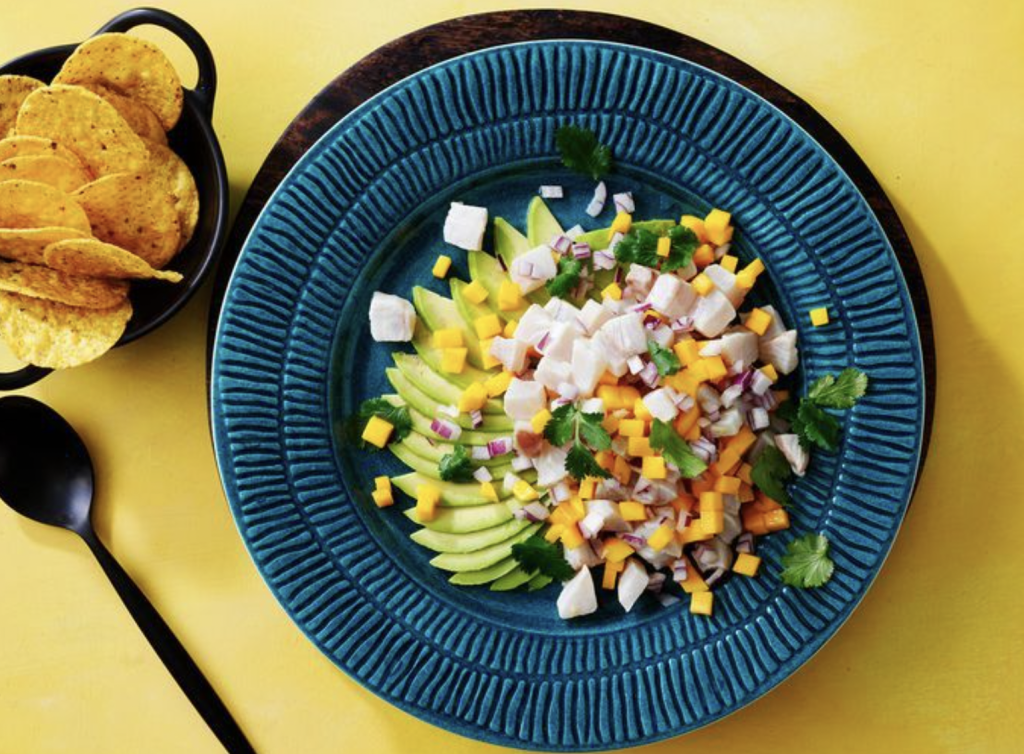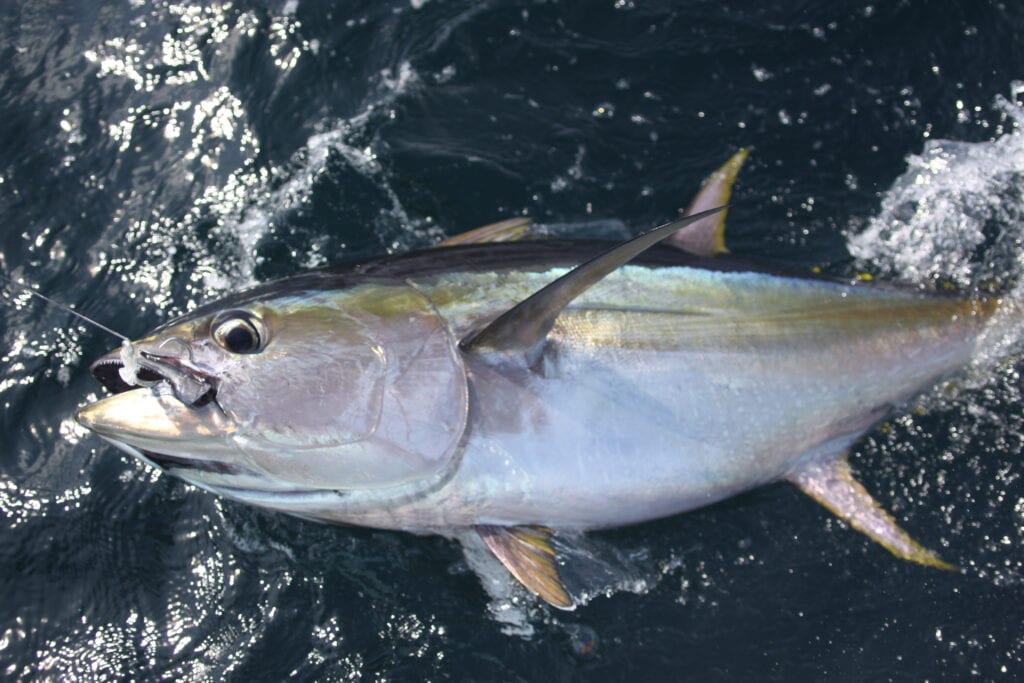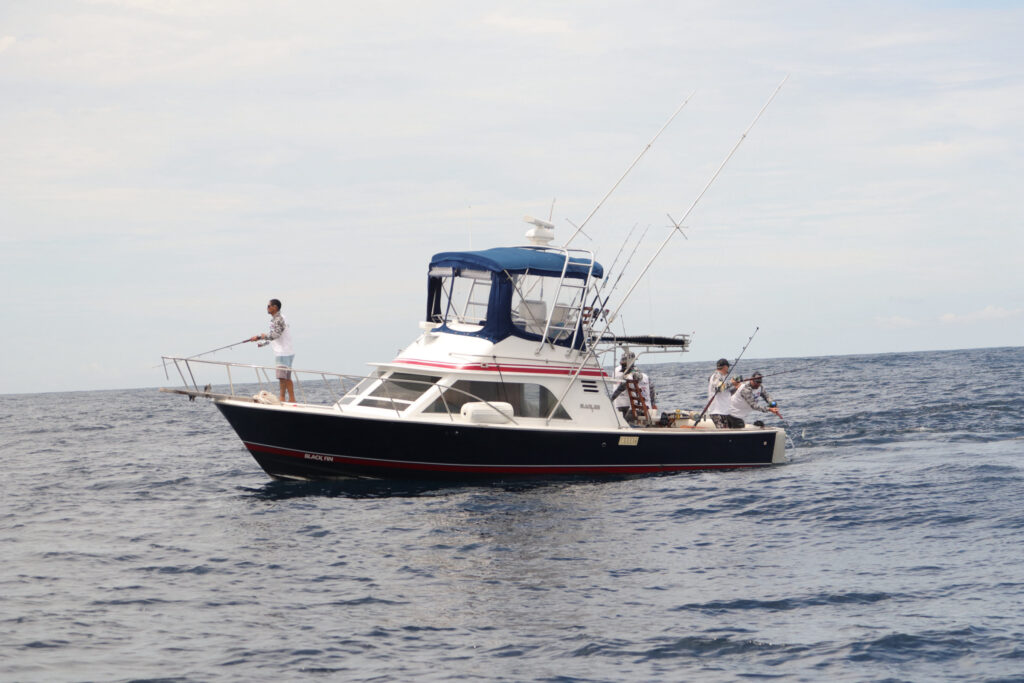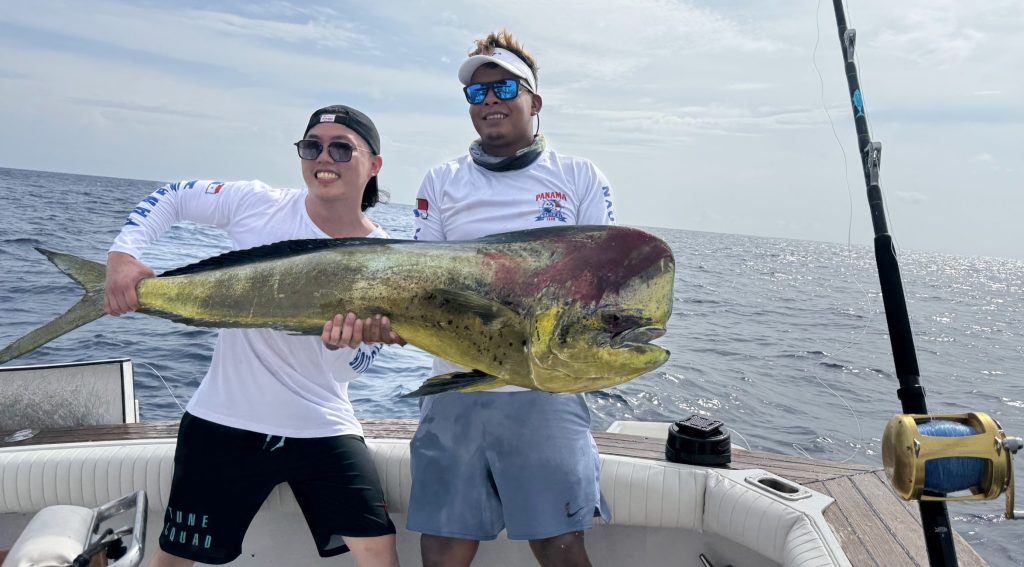Bonito—a small type of black tuna—is a popular target for many larger fish, making it an excellent choice for live bait. The Gulf of Chiriqui in Panama attracts huge black marlin, strong yellowfin tuna, tough cubera snapper, and roosterfish, all of which find the bonito hard to resist. In this guide, we’ll explore how using bonito as a live bait fishing technique, and why it makes fishing particularly exciting and enjoyable.
Bonito as Key Bait
Bonito plays a pivotal role in the sport fishing arena, especially in the fertile waters of the Gulf of Chiriqui. The region is geographically blessed with upwelling currents that bring deep, nutrient-rich water to the surface. This phenomenon occurs primarily around underwater structures such as Hannibal Bank, or Isla Montuosa.
These nutrient-dense waters support a diverse food web, starting with microscopic plankton which blooms abundantly. Small fish and crustaceans feed on them, which in turn attract schools of bonito.
Spotting a school of bonito is a sign of a thriving underwater ecosystem. They indicate that the area is teeming with life, not only of bonito but perhaps also larger predatory game fish. Predators like marlin and tuna are especially drawn to areas where bonito are present, as they provide a substantial and satisfying meal.
Anglers use this activity as a cue to start live baiting, capitalizing on the feeding frenzy. The presence of feeding marlin or nearby tuna can dramatically increase the odds of a successful catch, as these predators are already hunting and are more likely to strike at well-presented live bonito bait.
Catching Bonito and Using Tuna Tubes
Tuna tubes are specialized devices installed on fishing boats, specifically designed to keep bait fish such as bonito alive and healthy until they are needed for baiting.
Bonito have ram ventilators, meaning they need to be constantly moving to push water over their gills for respiration. In their natural habitat, this is achieved by swimming. Tuna tubes mimic this process by pumping seawater upwards. This ensures a continuous flow that passes over the gills of the bonito, allowing them to breathe while stationary. This system enables the bonito to remain vigorous and lively, making them more effective as live bait.
Catching A Bonito
To catch these bonito, anglers often use lures such as Clark spoons or squid heads. These lures are designed to mimic the small fish and other prey bonito feed on. The technique typically involves trolling these lures through the water to attract bonito. Once a bonito is caught, it is immediately placed face down into a tuna tube. This rapid transfer is crucial to prevent the stress and damage that could reduce the bonito’s effectiveness as bait.
In cases the bonito is hooked deeply or injured during the catch, they are not placed in the tuna tubes. They can be segregated to be used later as cut bait for species like snapper. Snapper are less particular about the liveliness of their prey compared to predators like marlin and tuna, making these injured bonito still valuable as bait.
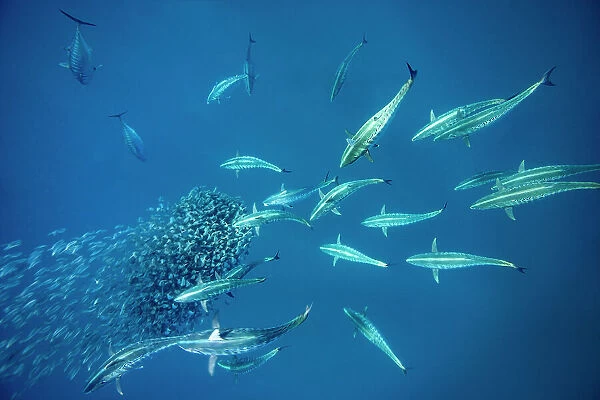
Rigging and Gear Setup
Rigging and gear setup are critical elements in successful live bait fishing, particularly when targeting large and powerful marine predators. The process begins with the precise rigging of the bait or bonito, using a method known as bridle rigging.
Bridle Rigging Technique
In bridle rigging, a piece of wax floss is used to secure the circle hook to the baitfish, ensuring both flexibility and durability. The wax floss is carefully threaded through the bonito’s soft tissue just above its eyes. This placement is strategic; it avoids critical damage to the brain or eyes, allowing the bait to remain lively and active, thus more attractive to predators. The loop created by the floss acts like a bridle on a horse, giving the name to this rigging technique.
Hook and Leader Configuration
The size of the circle hook is selected based on the size of the bonito to ensure a proper fit and optimal control. These hooks are then snelled to an 8-foot leader. The leader material, typically ranging from 150 to 300 pounds, is chosen for its strength and abrasion resistance. This is particularly important when fishing for species that can exert significant force. It also helps if the fish rub the line against sharp surfaces or coral structures. The leader is connected to a swivel, which serves as a joining mechanism that prevents line twisting during the fight with a fish. Attached to the swivel is a wind-on leader, usually about 20 feet long, made of 200-pound monofilament. This wind-on leader ends in a dacron loop, which is then connected to the main fishing line using a cat’s paw knot. This knot is popular for its strength and ease of untying, essential when changing setups or during line maintenance.
Safety and Efficiency with Wind-On Leaders
Wind-on leaders are particularly valued in big-game fishing for their ability to be reeled directly through the rod’s tip. This allows the angler to maintain pressure on the fish close to the boat. This is critical for safety, as it reduces the need for the angler to handle the leader manually. Also, in tournament settings, touching the leader or the double line—where the end of the mainline is tied into a loop with a bimini twist—confirms a legal catch.
This rigging and gear setup ensures that anglers can handle big fish close to the boat safely and efficiently. By understanding and implementing these techniques, anglers can significantly increase their chances of a successful and rewarding fishing experience.
Deploying Live Baits
Once you find the target (bonito being attacked, marlin feeding, or tuna up top), live baits are deployed using outriggers. Two bonito are placed close to the boat, around 30-50 feet behind the transom, and secured with rubber bands. Smaller baits are positioned further back in the center.
The bonito is fished on the surface while the boat remains in and out of gear. When a predator takes the bait, the rubber band snaps, and the clicker screams. The lever drag on the reel is set to just above free spool to offer enough resistance to prevent backlash while allowing the line to feed smoothly.
Hooking the Fish
After the strike, the angler switches the reel to free spool, letting the fish swallow the bait without resistance. The angler then smoothly moves the lever drag to strike position. Then reel until the line tightens, pulling the circle hook into place, usually in the fish’s mouth corner.
The Thrill of the Fight
At Panama Nautical Club, the true excitement of live bait fishing culminates in the fight with a big fish, such as a tuna or marlin. It’s a dynamic test of skill, strength, and endurance. Anglers find this part of fishing particularly thrilling, as each battle is unique and unpredictable. Successfully landing such a fish is not only rewarding but also a profound testament to the effectiveness of the techniques and gear used in live bait fishing.
This comprehensive approach to rigging, baiting, and handling fish is what makes live bait fishing an exhilarating experience for anglers. By understanding and mastering these elements, fishermen can greatly enhance their chances of engaging with and capturing some of the ocean’s most sought-after game fish.
If you are planning your next Panama Fishing Trip, check out out our fishing packages, email us at panamanauticalclub@gmail.com or call +1 800 507 1246 for more info on availabilities.

